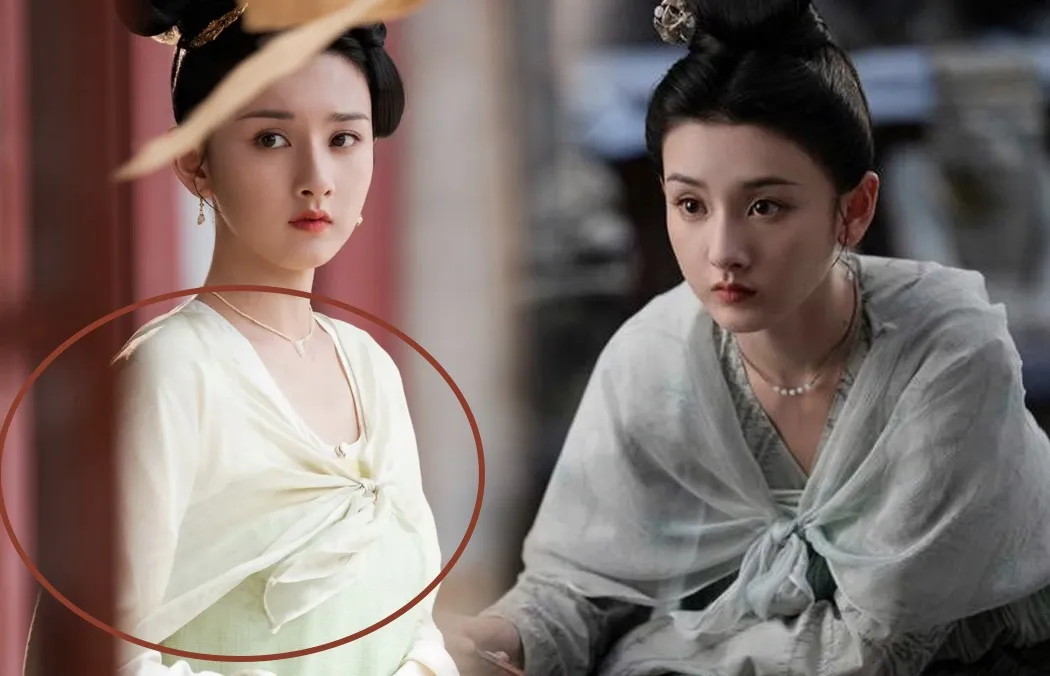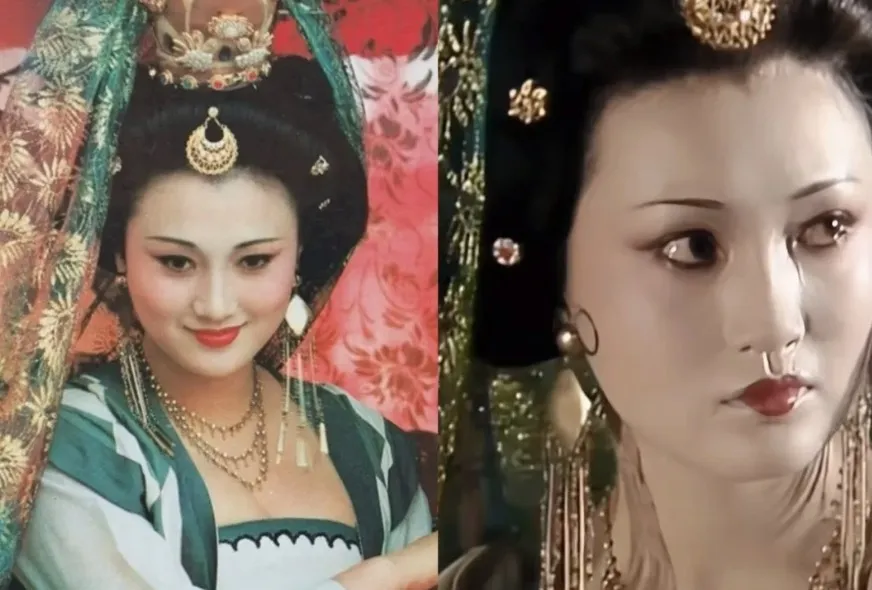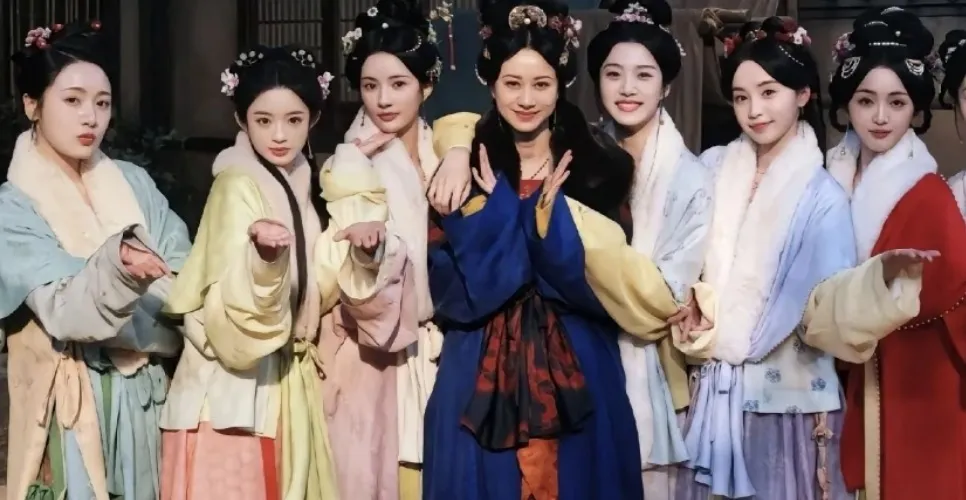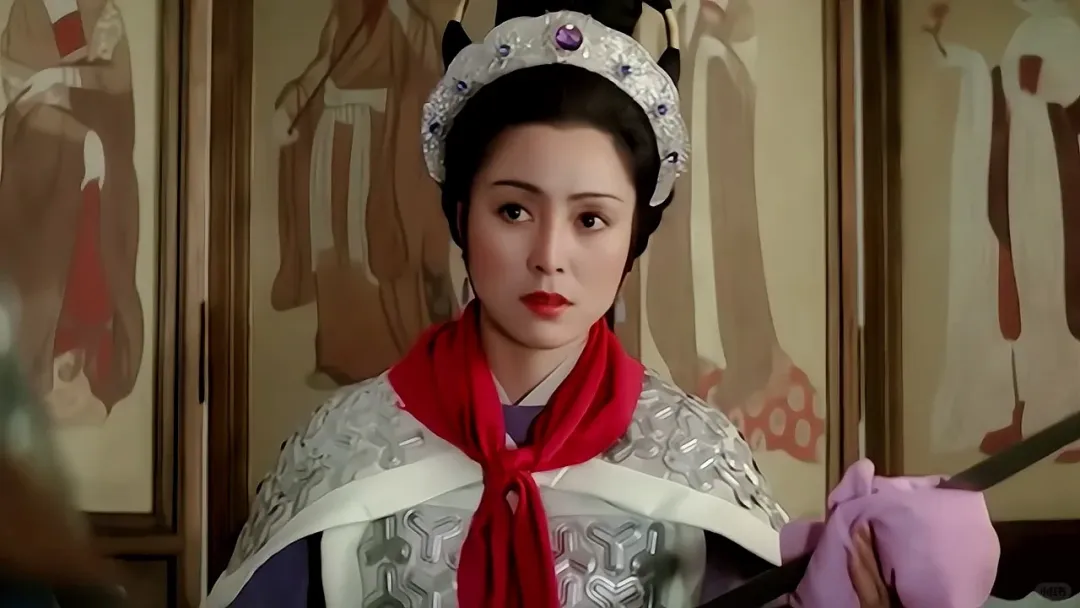Have you ever seen a neckerchief in a costume drama for the first time? In the costume drama Unburdened Ferry, Duan Banxia, played by Song Zuer, often appears wearing a short shawl. It looks like a pibo (披帛), but the way of tying a knot in front of the chest is so similar to our modern neckerchief. Could this also be a kind of "time - traveling" fashion?
Let's answer first. It's called a "neckerchief". Similar ways of wearing it were seen in the Northern and Southern Dynasties, and it became even more popular during the late Tang, Five Dynasties, and the Northern Song. It should be an extended style of the pibo or peizi (帔子), but actually shorter and wider than the pibo. It's mainly used to wrap the neck, keep out the cold, and match clothes.
In the painting The Picture of Proofreading Books in the Northern Qi Dynasty, we can see the tying style of the neckerchief of ladies in the Northern and Southern Dynasties. At this time, peizi already existed and was once commonly in a "short and wide" style, which is very similar to the neckerchief we see later. After the Wu Zhou period, something similar to a wide peizi appeared. It was longer than that in the Northern and Southern Dynasties and generally wrapped around the upper body. As shown in the characters in the mural, it was usually wrapped around the neck, overlapped in front of the chest, and extended to cover the arms, a bit like our modern shawl. At that time, people mainly called it "peizi".
Since the neckerchief is closer to the face, it has added a touch of romantic imagination in the works of literati. In Youyang Zazu written by Duan Chengshi of the Tang Dynasty, it is recorded that "One summer day, the emperor was playing chess with the princes and asked He Huaizhi to play the pipa alone. Concubine Yang stood in front of the chessboard to watch... At that time, the wind blew Concubine Yang's neckerchief onto He Huaizhi's cap."
During the late Tang, Five Dynasties, and the Northern Song, words like "li jin (礼巾)", "ling jin (领巾)", and "ling jin (令巾)" were commonly seen, such as "gold - pasted li jin", "silver - mud li jin", "white small - silk neckerchief", and "lightly embroidered ling jin". We can tell their craftsmanship and materials from these names. For example, "silk" is a relatively light silk, and "gold - pasting", "embroidery", and "silver - mud" are the craftsmanship for patterns on the fabric. This kind of neckerchief often appears in sets with skirts, shirts, or gorgeous ceremonial clothes. It belongs to the same category of clothing as the peizi, and the main difference lies in the length and size.
From paintings, we can see that the shape of something similar to a "neckerchief" can be rectangular or square. It is generally wrapped around the neck and tied or draped in front of the chest, similar to how we tie modern neckerchiefs. I guess that the "neckerchief" here is rectangular, possibly inheriting the characteristics of people in the previous Tang Dynasty wearing pibo, which is long and wide. It can wrap the neck, and the extended part can cover the abdomen. The "xiang pa (项帕)" may inherit the characteristics of the "guo pa (裹帕)", which is short and square. It is tied or fastened in front of the neck. Because it is square, it forms a triangle at the back, and less of the shoulders are covered.
The "neckerchief" in the historical records of the Song Dynasty also has something in common. For example, in Zui Taoyuan by Chen Yunping of the Song Dynasty, it says: "The ornaments are small, and the neckerchief is slanting. Her hair is like two black crows." From the ladies' paintings by Tang Bohu, we can see this kind of neckerchief worn in front - opening style, tied in front of the chest with different patterns on the back, which has a unique charm.
This kind of neckerchief can also be paired with military uniforms. For example, it often appears in costume dramas from the last era as an accessory for female generals. It also appears on some soldiers. The "jin" is also seen in ancient military uniforms. It can be used on hats or worn around the neck, just with different names. This kind of jin often appears on low - ranking soldiers. One reason is to distinguish their identities and ranks, and the other is to protect the collar and block the sand.
Nowadays, we often use neckerchiefs as a fashion accessory, and they are not uncommon on the fashion runway. It's really amazing that our ancestors had this kind of item so early. It's really an advanced fashion. However, this kind of neckerchief rarely appears in costume dramas. Most of them are pibo. We should draw more inspiration from these valuable historical elements.





